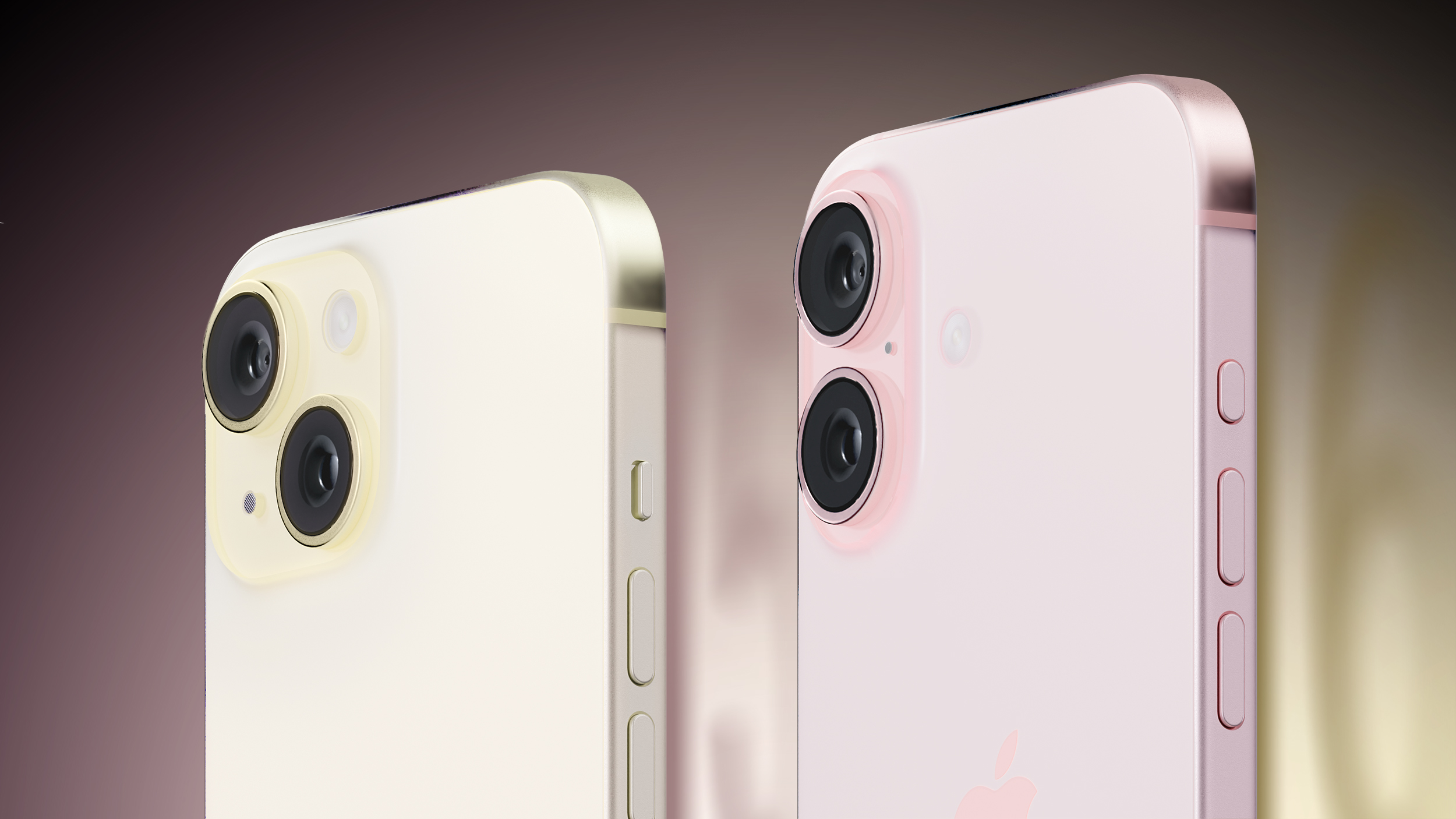iPhone 15 vs. iPhone 16 Buyer’s Guide: 30+ Upgrades Compared

[[{“value”:”The iPhone 16 and iPhone 16 Plus launch later this month, offering 35 changes and improvements over their predecessors. Here’s everything that’s different.
While Apple’s latest models bring a variety of enhancements, the most significant change is support for Apple Intelligence, a new AI system that transforms how you interact with your device by offering smarter notifications, text summarization, and contextual information. The iPhone 16 also features the Action Button and Camera Control button, which provide more intuitive ways to access key functions.
But beyond these headline features, how much of an improvement does the iPhone 16 really offer? This guide breaks down the differences between the iPhone 15 and iPhone 16 models to help you understand all of the changes and determine whether these enhancements are enough to justify making the switch from an iPhone 15.
This guide focuses on the iPhone 15 and iPhone 16, but to learn about how the iPhone 16 Pro improves on the iPhone 15 Pro, see our other comparison guide.
Design and Displays
The iPhone 16 introduces several design and display upgrades over the iPhone 15. The shift to vertically arranged cameras facilitates spatial video capture and looks more modern. Durability is also improved with the next-generation Ceramic Shield, which is twice as strong as the previous version. Additionally, the customizable Action Button replaces the traditional Ring/Silent switch and a new Camera Control button streamlines photography.
iPhone 15
iPhone 16
Diagonally arranged rear cameras
Vertically arranged rear cameras
~2–4 nits minimum brightness
1 nit minimum brightness
Ceramic Shield front glass
Next-generation Ceramic Shield front glass (2x stronger)
Improved thermal design for better heat dissipation
Easier battery service
Ring/Silent switch
Action Button
Camera Control capacitive button with sapphire crystal cover
Available in Green, Blue, Pink, Black, and Yellow finishes
Available in Teal, Ultramarine, Pink, Black, and White finishes
Artificial Intelligence
The iPhone 16 includes support for Apple Intelligence, a significant upgrade absent in the iPhone 15. This artificial intelligence system enhances the iPhone‘s ability to understand and process personal context, offering features like Visual Intelligence, which can recognize objects and scenes through the camera and provide relevant information, such as restaurant or product details.
iPhone 16
Apple Intelligence (including priority notifications, text summarization, system-wide writing tools, audio transcription, Genmoji creation, personalized suggestions, and more)
Visual Intelligence, allowing users to pull up contextual information about objects or scenes in front of the camera (such as restaurant details or product info)
Apple Intelligence features like priority notifications, text summarization, and system-wide writing tools can significantly enhance the experience of using the device, making the iPhone 16 a substantial upgrade over the iPhone 15 in this area.
Chip, Memory, and Connectivity
The iPhone 16 brings notable improvements in performance and connectivity over the iPhone 15, driven by the A18 chip built with TSMC’s 3nm process, which is more efficient and powerful than the iPhone 15’s A16 chip. The 6-core CPU is up to 30% faster, while the upgraded 16-core Neural Engine is optimized for running generative models, doubling the speed of machine learning tasks. In terms of graphics, the iPhone 16’s 5-core GPU delivers a 40% boost in performance and introduces hardware-accelerated ray tracing, enhancing gaming and visual effects.
Memory and connectivity also see significant upgrades, with the iPhone 16 offering 8GB of RAM, a 33% increase over the iPhone 15, and the introduction of Wi-Fi 7 and Thread networking for better wireless performance and smart home integration.
iPhone 15
iPhone 16
A16 Bionic chip (TSMC’s “N4P” enhanced 5nm process)
A18 chip (TSMC’s “N3E” enhanced 3nm process)
6-core CPU
6-core CPU (up to 30% faster)
16-core Neural Engine
Upgraded 16-core Neural Engine optimized for generative models (runs ML models 2x faster)
5-core GPU
5-core GPU (up to 40% faster)
Hardware-accelerated ray tracing
6GB memory
8GB memory (+33%)
Wi-Fi 6
Wi‑Fi 7 (802.11be) with 2×2 MIMO
Thread networking technology
The performance gains with the A18 chip and enhanced GPU are particularly meaningful for users who engage in gaming, video editing, or other graphics-heavy tasks. The hardware-accelerated ray tracing will greatly benefit gamers, making the iPhone 16 capable of rendering more realistic lighting and shadows. Meanwhile, the Neural Engine upgrade doubles the speed of machine learning tasks such as Apple Intelligence.
For everyday users, the jump from 6GB to 8GB of memory ensures better multitasking and future-proofing, while Wi-Fi 7 and Thread networking will improve connectivity speeds and compatibility with smart home devices. The iPhone 16’s improvements are substantial for users who demand higher performance and future-ready wireless tech, though those who use their devices more casually might notice less immediate impact.
Camera
The iPhone 16 enhances the already impressive camera setup from the iPhone 15. The Ultra Wide camera has been upgraded with an ƒ/2.2 aperture, providing better low-light performance compared to the ƒ/2.4 aperture on the iPhone 15. The iPhone 16 also introduces Macro photography and Macro video recording, enabling users to capture detailed close-up shots, while the Camera Control button brings new levels of ease and precision to shooting photos and videos.
iPhone 15
iPhone 16
48-megapixel Main camera with ƒ/1.6 aperture
48-megapixel Fusion camera with ƒ/1.6 aperture
12-megapixel Ultra Wide camera with ƒ/2.4 aperture
12-megapixel Ultra Wide camera with ƒ/2.2 aperture for improved-low light performance
Anti-reflective coating on Fusion camera lens
Macro photography and Macro video recording, including slo‑mo and time‑lapse
Photographic Styles
Next-generation Photographic Styles
Spatial video recording at 1080p at 30 fps
4K video recording at 24 fps, 25 fps, 30 fps or 60 fps
4K Dolby Vision video recording at 24 fps, 25 fps, 30 fps or 60 fps
1080p HD video recording at 25 fps, 30 fps or 60 fps
1080p Dolby Vision video recording at 25 fps, 30 fps or 60 fps
Cinematic mode up to 4K HDR at 30 fps
Cinematic mode up to 4K Dolby Vision at 30 fps
QuickTake video
QuickTake video (up to 4K at 60 fps in Dolby Vision HDR)
Camera Control button features:
Launch the Camera App: Pressing the Camera Control button immediately opens the camera app.
Capture Photos: A single press of the button captures a photo, providing a quick and tactile way to take pictures.
Record Videos: A press and hold action allows you to start recording a video.
Half-Press for Focus and Exposure (upcoming feature): A light, half-press will lock focus and exposure, allowing you to reframe the shot without losing focus.
Trackpad-Like Control: The capacitive sensor on the button acts like a trackpad, enabling gestures to control zoom, cycle through filters, or switch between lenses by sliding your finger across the button.
Third-Party App Integration: The Camera Control button can also be used to trigger third-party camera apps, giving more flexibility to users who prefer other photography tools.
Camera Function Overlay: A light touch gesture reveals a clean preview and quick access to key camera controls like zoom or exposure settings.
Visual Intelligence Activation: The Camera Control button is integrated with Visual Intelligence, allowing users to pull up contextual information about objects or scenes in front of the camera.
Audio Recording
The iPhone 16 brings several enhancements to audio recording over the iPhone 15. While the iPhone 15 offers stereo recording, the iPhone 16 introduces Spatial Audio recording, providing a more immersive sound experience, particularly with playback on the Apple Vision Pro headset. Additional features like wind noise reduction and the new Audio Mix function further improve the quality and flexibility of recorded audio, making the iPhone 16 a more capable device for capturing high-quality sound.
iPhone 15
iPhone 16
Stereo recording
Spatial Audio and stereo recording
Wind noise reduction
Audio Mix
Battery Life and Charging
The iPhone 16 brings noticeable improvements in battery life and charging efficiency compared to the iPhone 15. With up to 22 hours of battery life on the iPhone 16 and 27 hours on the iPhone 16 Plus, the new models offer a modest boost. In addition, MagSafe wireless charging is now significantly faster, supporting up to 25W with a 30W adapter, a 66.67% increase over the iPhone 15’s 15W limit.
iPhone 15
iPhone 16
iPhone 15: Up to 20 hours of battery life
iPhone 15 Plus: Up to 26 hours of battery life
iPhone 16: Up to 22 hours of battery life
iPhone 16 Plus: Up to 27 hours of battery life
MagSafe wireless charging up to 15W with 20W adapter or higher
MagSafe wireless charging up to 25W with 30W adapter or higher (+66.67%)
Release Date
The iPhone 16 and iPhone 16 Plus will be available for pre-order starting on Friday, September 13, 2024, with the official launch and availability in stores beginning Friday, September 20, 2024.
Is It Worth Upgrading?
The iPhone 16 and iPhone 16 Plus, while bringing some notable improvements, offer what might feel like an incremental upgrade over the iPhone 15 and iPhone 15 Plus for most users. The most significant advancements come from Apple Intelligence and the introduction of the Action Button and Camera Control, both of which provide new ways to interact with the device.
Apple Intelligence is arguably the most important new feature, as it enhances the iPhone’s ability to understand user context and assist in everyday tasks like prioritizing notifications, summarizing texts, and pulling real-time information through Visual Intelligence. For users who rely heavily on their phone for productivity and communication, this AI-driven functionality is a meaningful addition. The Action Button and Camera Control button are welcome hardware changes, offering customizable, quick access to key functions and improved control over photography and videography.
Outside of these features, however, the upgrades feel more conservative. The performance gains with the A18 chip, new Neural Engine, and GPU architecture offer incremental improvements in speed and efficiency, which will benefit high-performance tasks like gaming, but may not be immediately noticeable for everyday users. The camera updates, including better ultra wide low-light performance and Macro photography, are valuable for photography enthusiasts, but they don’t dramatically alter the overall camera experience for casual users. Similarly, the improvements in battery life and charging speeds are useful but relatively minor, providing a modest boost over the iPhone 15 lineup.
For users with an iPhone 15, the upgrade might not feel substantial unless you’re looking to take full advantage of Apple Intelligence or the new buttons. If your phone usage revolves around basic tasks, the iPhone 15 remains an excellent device, and upgrading may not be necessary. However, if you’re someone who is interested in AI or more intuitive camera controls, the iPhone 16 offers enough to justify the switch. Overall, the iPhone 16 is a step forward, but the upgrades are relatively modest.
This article, “iPhone 15 vs. iPhone 16 Buyer’s Guide: 30+ Upgrades Compared” first appeared on MacRumors.com
Discuss this article in our forums
“}]]





